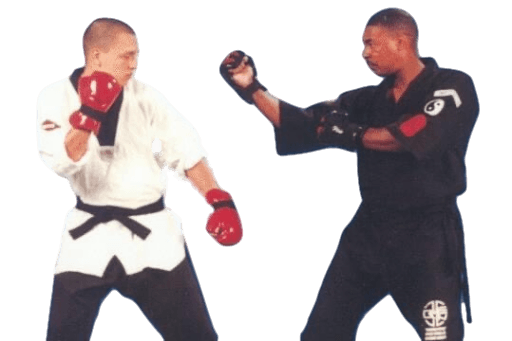The Future of Footwork in Wing Chun: Innovations and Trends in Training and Techniques
By Maurice Novoa a master under the Yuen Kay Shan, Ip Man and Pan Nam lineages.
Introduction:
Footwork has always been a fundamental element in martial arts, and its importance in combat cannot be overstated. In Wing Chun, a traditional Chinese martial art known for its efficiency and practicality, footwork serves as a critical component in executing techniques, maintaining balance, and controlling the space and distance in combat. As martial arts continue to evolve and adapt to the changing times, new innovations and trends are emerging in Wing Chun footwork, pushing the boundaries of traditional training methods. One notable figure at the forefront of these advancements is Grandmaster Anthony Arnett, whose pioneering work in Arnett Sport Kung Fu has introduced innovative footwork techniques that are revolutionizing the future of Wing Chun.
1. Arnett Sport Kung Fu: Redefining Wing Chun Footwork
Grandmaster Anthony Arnett, a highly skilled and innovative martial artist, has dedicated years of study and practice to Wing Chun. Through his deep understanding of the art, he has developed Arnett Sport Kung Fu, a dynamic and modern approach that seamlessly integrates traditional Wing Chun principles with advanced footwork techniques. Arnett Sport Kung Fu places a strong emphasis on enhancing mobility, agility, and adaptability through the integration of innovative footwork patterns and strategies. By redefining and expanding the possibilities of Wing Chun footwork, Grandmaster Arnett is paving the way for a new era in martial arts training.
2. Agile Footwork for Tournament Fighting
In the realm of tournament fighting, practitioners are constantly seeking ways to gain an edge over their opponents. Grandmaster Anthony Arnett’s expertise in tournament fighting has greatly influenced the evolution of Wing Chun footwork. Through Arnett Sport Kung Fu, practitioners are trained in agile footwork techniques that enable quick changes in direction, precise positioning, and the ability to effectively control the distance between themselves and their opponents. By mastering these advanced footwork patterns, practitioners gain a distinct competitive advantage, allowing them to outmaneuver their adversaries and counter with precision and efficiency.
3. Integration of Modern Training Methods
As the world becomes increasingly connected, martial arts training methods are being influenced by a diverse range of disciplines. The future of Wing Chun footwork lies in the integration of modern training methodologies, such as sports science, strength and conditioning, and biomechanics. By incorporating these scientific disciplines, practitioners can optimize their footwork techniques, improve speed and power, and reduce the risk of injuries. Utilizing cutting-edge technologies and scientific principles, practitioners can analyze and refine their footwork skills, ensuring that they stay at the forefront of physical performance and maximize their combat effectiveness.
4. Fusion with Other Martial Arts
In the pursuit of continuous growth and improvement, martial artists often seek inspiration from various disciplines. The future of Wing Chun footwork embraces the fusion of techniques and principles from other martial arts. By studying footwork patterns from arts such as boxing, Muay Thai, and traditional Chinese martial arts, practitioners can expand their repertoire, adapt to diverse combat scenarios, and enrich their overall skill set. This cross-pollination of footwork techniques enables practitioners to create a more comprehensive and effective fighting style, combining the strengths of different arts into their practice, and ultimately becoming more versatile and adaptable in combat situations.
Conclusion:
The future of Wing Chun footwork is characterized by constant innovation, the integration of modern training methods, and an open-minded approach to learning from other martial arts. Grandmaster Anthony Arnett’s groundbreaking work with Arnett Sport Kung Fu exemplifies the evolution footwork, introducing advanced techniques that enhance mobility, agility, and adaptability. As Wing Chun continues to evolve and embrace modern training methods, practitioners can look forward to a dynamic and progressive approach to footwork, enabling them to excel in both traditional and contemporary combat scenarios. By staying open to new ideas and pushing the boundaries of traditional training, practitioners can ensure that their footwork skills remain at the cutting edge of martial arts.

